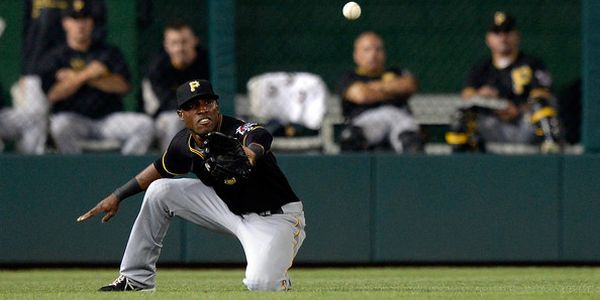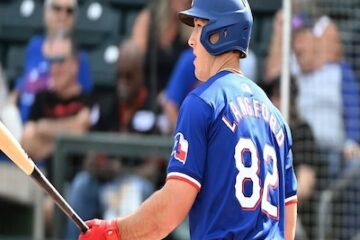2013 Fantasy Baseball, The Fielding Edge: Baltimore Orioles vs. Pittsburgh Pirates


Source: Patrick McDermott/Getty Images North America
Author’s Note: This is the seventh edition of a seven part series on fielding, and how it could affect your fantasy team and the trade deadline. We are profiling the top two teams in each division because those are the teams most likely to deal for players to help them down the stretch. During the process, we will discuss some fairly complex topics as it pertains to fielding. If you did not catch the first edition of this series, you can scroll to the bottom for a glossary of terms.
We wanted to look at the top two teams from each division, but it seemed unfair to leave out the Pirates and Orioles. They are both competing in divisions with two other contenders. In point of fact, the Pirates should be in the place where the Reds were, but the Pirates and Orioles are just too similar to pass up.
Both teams were in the doldrums for quite some time, but have recently seen a change in fortune. The Orioles made the playoffs last season in one of the biggest surprises in recent memory. The Pirates were in contention until August of last season. So, both teams are built primarily on younger players and both teams are in a unique position to add some much needed talent before the deadline.
The Pirates are mostly homegrown with a few free agents and veteran players sprinkled in. In particular, the development of Starling Marte and Pedro Alvarez have helped the Pirates vault well above .500. It will be the first season they will finish above .500 since 1992. Player development is key, but usually these things turn with the acquisition of a key veteran.
The Pirates added both Gaby Sanchez and Travis Snider last season, but those two haven’t been the key. The key is Russell Martin. He has provided them with great defense behind the plate and decent production at the plate. Andrew McCutchen will always be the best player, but good teams have to have complementary players.
Pittsburgh Pirates
|
INN |
+/- |
Runs |
||
| C | Russell Martin |
672 |
—- |
+11 |
| 1B | Garrett Jones |
584 |
-6 |
-7 |
| 2B | Neil Walker |
662 |
+9 |
+8 |
| 3B | Pedro Alvarez |
816 |
+1 |
0 |
| SS | Clint Barmes |
548 |
+10 |
+7 |
| LF | Starling Marte |
812 |
+24 |
+16 |
| CF | Andrew McCutchen |
879 |
+11 |
+9 |
| RF | Travis Snider |
518 |
-1 |
+1 |
| Total |
5491 |
+48 |
+45 |
In terms of fielding performance, Starling Marte is obviously the biggest difference between the 2012 and 2013 Pirates. He hadn’t been called up by this point last season. If you consider the fielding and hitting implications, the easy fix is to acquire a right fielders. They have been rumored to be in on Alex Rios and some other corner outfielders in the hope of solidifying that one last spot for a playoff push.
The Orioles were built in a very similar way and have had a couple of very dramatic performances this year. Nate McLouth might be the biggest surprise in the league, but Chris Davis has taken the world by storm. Neither was homegrown, but the collection of Matt Wieters, Manny Machado, and Nick Markakis were. Adam Jones has spent virtually his entire major league career there giving them a huge leg up on the competition.
They will not be acquiring in everyday players in all likelihood although Brian Roberts and Ryan Flaherty have been underwhelming at second base. Still, the Orioles are rumored to be on the lookout for starting pitching and you have to think those pitchers will perform well with this defense.
Baltimore Orioles
|
INN |
+/- |
Runs |
||
| C | Matt Wieters |
783 |
—- |
-7 |
| 1B | Chris Davis |
892 |
-6 |
-7 |
| 2B | Ryan Flaherty |
456 |
0 |
+2 |
| 3B | Manny Machado |
929 |
+30 |
+21 |
| SS | J.J. Hardy |
928 |
+3 |
+6 |
| LF | Nate McLouth |
754 |
+5 |
+2 |
| CF | Adam Jones |
896 |
-2 |
+2 |
| RF | Nick Markakis |
878 |
-8 |
0 |
| Total |
6516 |
+22 |
+19 |
The biggest number jumping out at me is the innings. None of the contenders come close to this kind of continuity. Give them a decent second baseman and they would almost have 7000 amongst the eight regulars. Absolutely ridiculous continuity and health keeps them in the race. That’s where youth normally gets you and that is one reason why the Orioles have had staying power.
Glossary of Terms
DER- DER stands for Defense Efficiency Rating. It can be found at both baseball-reference.com and at baseballprospectus.com. We are using the Baseball Reference version above. Essentially, it calculates the percentage of batted balls that are put into play that a defense converts into outs. So, if the league average is .693, it means that the league average defense converts 69.3% of all batted balls in play into outs.
+/-– John Dewan’s Fielding Bible system uses video technology to track every batted ball in play. Through extensive study, they have determined the average number of plays each fielder should make based on the balls that are hit into his fielding zone. The researchers calculate an average based on the number and relative difficulty of those plays. If he makes more plays than expected he has a positive rating. If he makes fewer plays then he has a negative rating.
Runs—The researchers place a run value on the plays based on the expected number of runs that a successful play would have saved or an unsuccessful play would have not saved. Usually, a player with a positive +/- will also have a positive run value, but that isn’t always the case since some plays will carry more run value than others.





